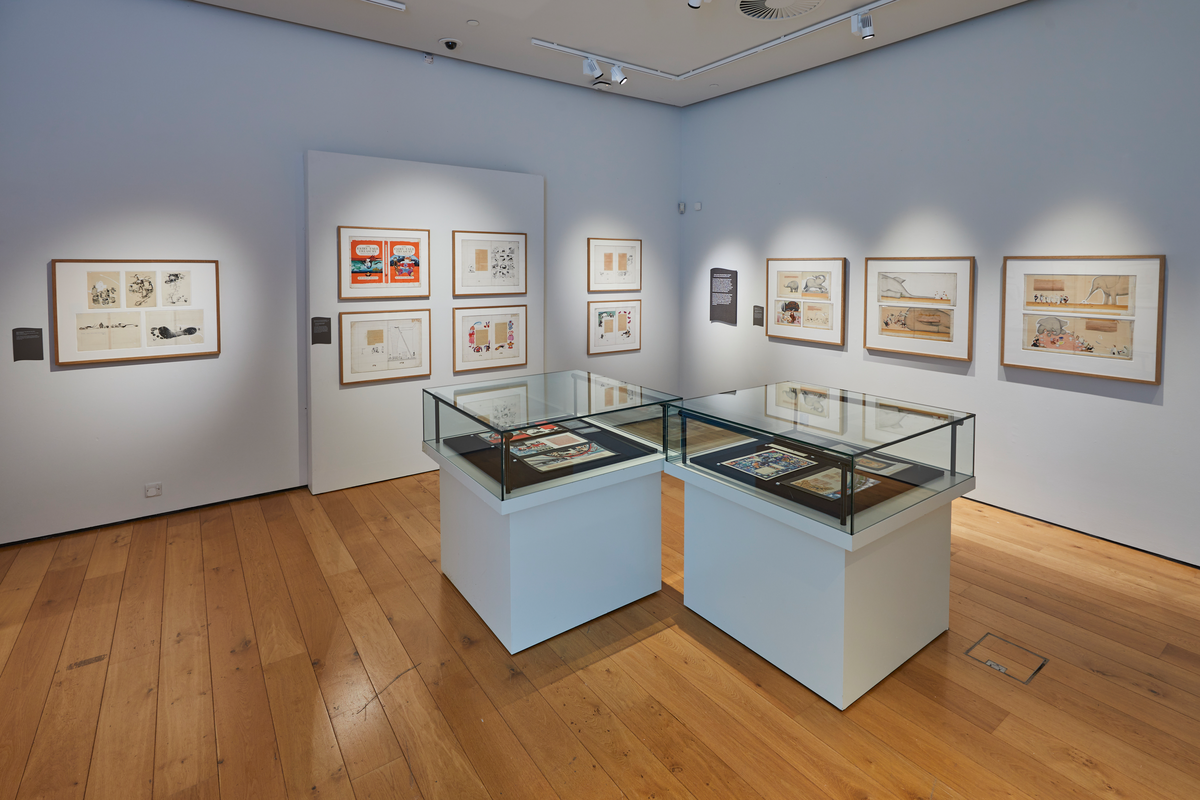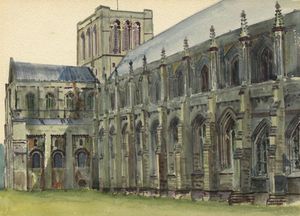Welcome to the second part of our Q&A with Katie McCurrach, Assistant Curator and Touring Manager at House of Illustration, and Nicolette Jones, author of Raymond Briggs.
6. What kind of message do you think Briggs wants people to hear through his books?
KM: Briggs has said, particularly of his more political works, that he didn’t have a particular aim for the books – but I wonder if some of this is his humble nature. In his work I think you can see a craftsmanship and skill in storytelling that draws the reader in so that they are emotionally engaged and invested in the narrative, and this is on purpose. However, perhaps Briggs uses his work to process and explore his own memories, and it is this authenticity makes his books so brilliant – rather than that he is always thinking about the reaction from the reader.
NJ: I think he would find the idea of a message self-aggrandising. He said: “Books are not missiles, you don't aim them at anybody”. Which seems to preclude trying to get a message across. I think Katie is right, that he explores his own memories in a way that happens to resonate with us all.
7. Katie, what was the biggest challenge in curating this exhibition?
KM: I felt a big responsibility to do justice to Briggs and his work! His books are so loved by so many people so there’s a pressure to ensure visitors come away from the show feeling like the curator has communicated clearly why the books are so special. Also Briggs as an individual is a complex and interesting person who has worked in many different ways across his career, so I wanted to put together a show that would give an insight into his character in a way that he would like. It’s hard to condense a person’s life and work into one exhibition - I’m not sure it’s ever fully achievable - but I hope the exhibition can give some sense of the importance and exciting nature of Briggs’ work.
8. Nicolette, what inspired you to write your book, Raymond Briggs?
NJ: I think the sense that there was so much to say about Briggs’s work. I had written about him before but did not feel the subject was exhausted, and was very keen to look at the books again. Sure enough, there were new discoveries. Thames & Hudson’s The Illustrators series is also an opportunity to look at technique and style as well as content, and I was very interested in trying to track and describe his formal experiments and the development of his craft, and to explore his influences. I think this show gives a marvellous idea of precisely how his images were made and how his style evolved.
9. Which of Briggs’ works is your personal favourite, and why?
KM: For me it has to be Fungus the Bogeyman, as I read it cover to cover repeatedly as a child. Children love disgusting things but I also was obsessed with how Briggs had created a detailed world for the character, even down to the names of Fungus’ bathroom products. As I’ve got older, I’ve also been able to appreciate the depth of the book, Fungus is worrying about his life’s purpose and considering his place in the world.
NJ: I have a soft spot for The Tin Pot Foreign General and the Old Iron Woman because my mother is Argentine, and I sympathise with its anger and grief. But I think Ethel & Ernest is the masterpiece. It is so witty and full of truthful observation and of feeling. It is impossible not to be engrossed, entertained and moved by it.

10. And finally, what books did you enjoy reading when you were a child?
KM: That’s a hard question for me as I would read almost constantly as a child (I even fell into an old well when I was reading and walking at the same time!) I always enjoyed books that created whole new worlds to imagine or added fantasy elements into our own world – Mortal Engines by Philip Reeve, Skelligby David Almond, Northern Lights by Philip Pullman and Marcia William’s Greek Myths to name just a few.
NJ: I was also a constant reader. I was a great consumer of Puffin books in the glory days under the editorship of Kaye Webb; every week we would buy the latest publications from our local independent bookshop. But I am an artist’s daughter and I looked at a lot of paintings in my childhood, images always mattered to me whether fine art or illustration. I was also very keen on folk tales and fairy tales, which feature large in Raymond’s early work, and offer, as he discovered, great opportunities to illustrators.
Raymond Briggs: A Retrospective is now open at The Gallery, Winchester Discovery Centre until 18 August 2021. Visit our website to book your tickets and plan your visit.
If you have enjoyed Culture on Call and you are able to make a donation, please click the link below. Any support you can give will help us keep communities connected to culture in these difficult times.





